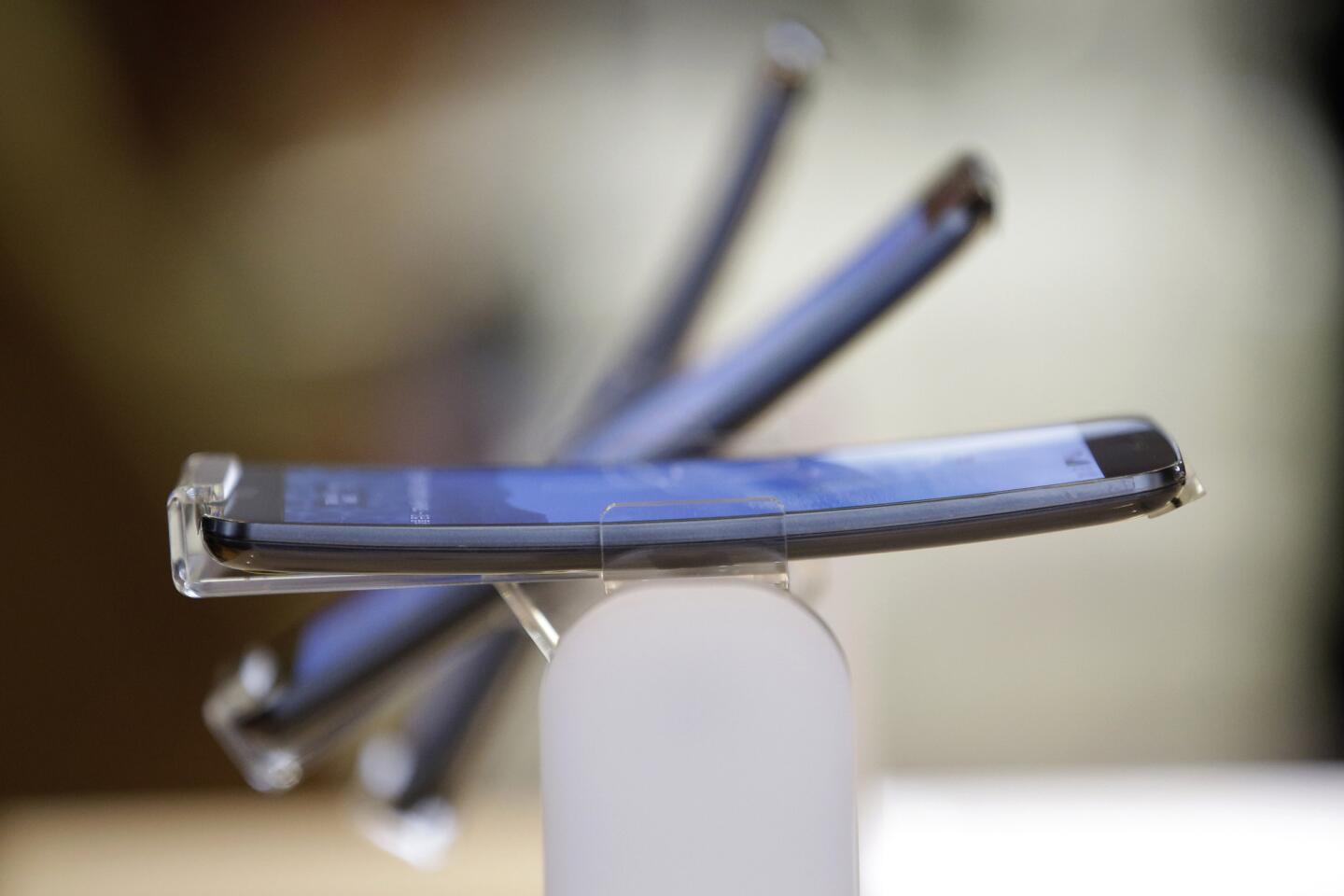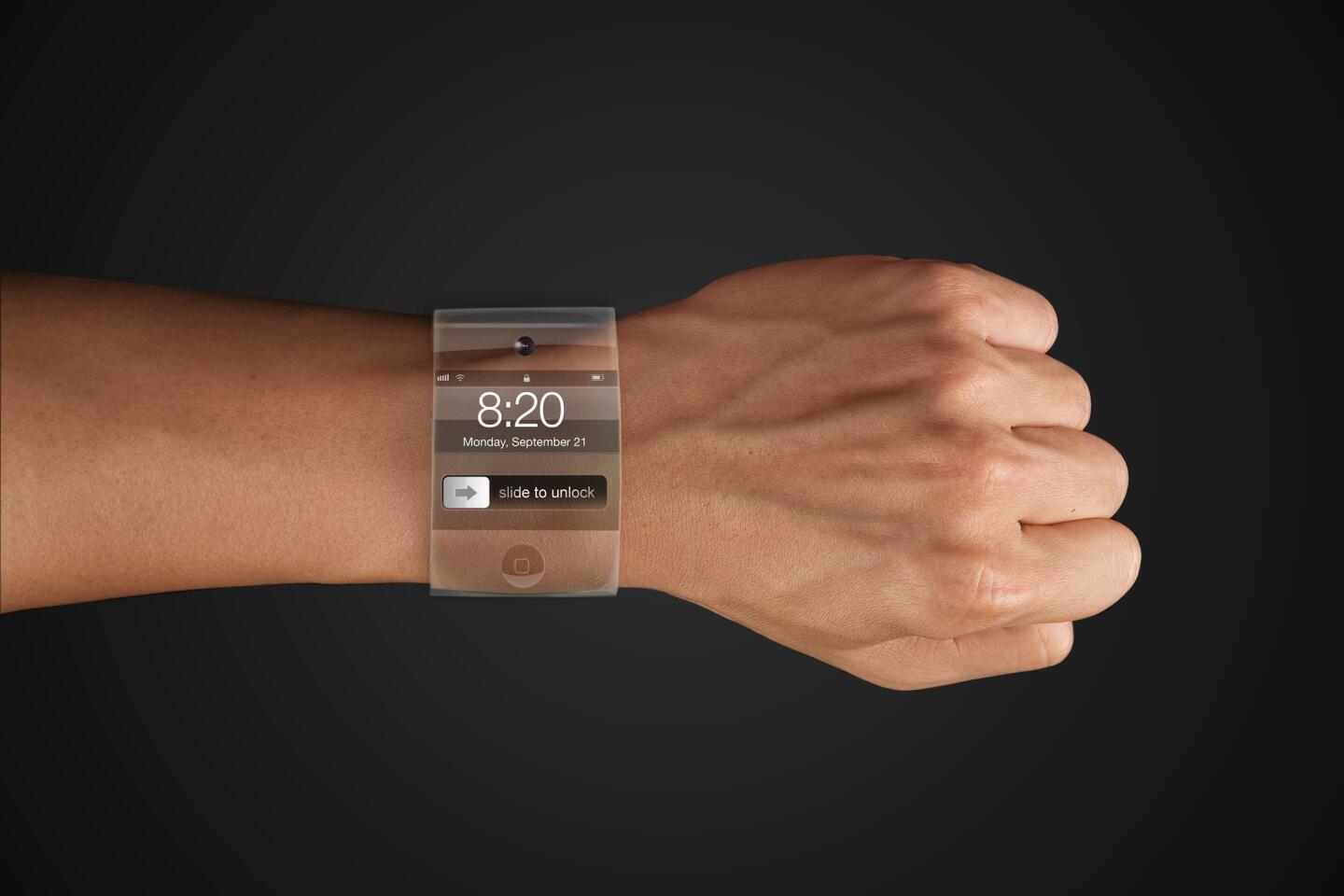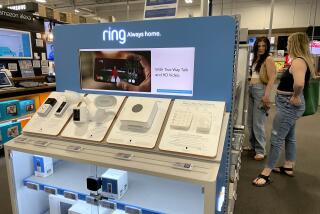10 Tech gadgets we want to see in 2014: iPhone 6, Google Glass, iWatch
- Share via
The year has barely started, but it’s never too early to make a wish list for the kinds of gadgets that we want to see in 2014.
Tech companies gave their users a lot to look forward to in 2014, from wearable devices to new smartphone technologies. So here is our list of the top 10 tech gadgets we want to see in 2014.
10. Amazon media player
Google entered the world of digital media players in 2013 with the $35 Chromecast, a credible rival to the Apple TV and Roku’s many devices. But there were also reports that Amazon had a device of its own in the works.
The Amazon digital media player was never released, but it makes sense for Amazon to enter the market. The company sells a wide variety of digital content that users would want on their TVs and entertainment systems, from songs to TV shows and movies.
Apple users and Google users are already covered with devices that are compatible with their smartphones and tablets, but users of Amazon’s Kindle Fire tablets are left helpless. To avoid losing its tablet users to Apple and Google, Amazon should launch a digital media player of its own.
9. Affordable 4K TVs, 4K screens on mobile devices
This was the first full year that 4K Ultra HD televisions were on sale to consumers, but so far, most of the sets are way too pricey. We’re talking several thousand dollars for quality TV sets.
Ultra HD TVs -- which have four times the resolution of HD TVs -- are very nice, but they don’t deliver the kind of leap forward that consumers got when they bought their first HD TVs. The difference in quality isn’t blatantly noticeable.
If the TV industry wants 4K Ultra HD to catch on, prices need to come down -- preferably in time for this summer’s World Cup. In 2014, we want to see more 4K TVs at prices that consumers can actually afford. This means consumers need to see more models that are available for less than $1,000.
Additionally, it’d be nice to see 4K Ultra HD screens on our smartphones and tablets. Already, many mobile devices have full 1080p HD screens, and in November Qualcomm announced a new processor that is capable of bringing 4K Ultra HD to mobile gadgets. So let’s not delay this.
8. Tile
Users who have a habit of losing their keys and other items will want to pre-order Tile.
The square-shaped device is used to keep track of items that users could easily lose but wouldn’t want to, such as a phone or a purse. Using Bluetooth, Tile connects to users’ smartphones, letting them track the distance to their lost items using an app on their device. Users can also activate a Tile to ring, helping them find their misplaced item with the help of a sound.
Even more helpful, users can tap into the network of Tile users to find items that have been stolen, such as a bike. A video for the product says that if the Tile in question comes within the range of any other Tile user, a notification will be sent to the owner of the Tile with the whereabouts of the stolen item.
Tile, which has raised more than $2.6 million through crowdfunding, is available for pre-order for $19.95.
7. Coin
Another crowdfunded device in 2013 was Coin, a smartcard that helps users slim their wallets by being used as a substitute for their credit and debit cards.
The way the device works is users load their cards onto Coin using an app and a card reader that they attach to their smartphone. Once the device is set up, users can press a button on the Coin smartcard to toggle between the multiple cards they have loaded on the device. By pressing the button, users can easily switch from their business credit card to their debit card or their personal credit card, adjusting Coin for various scenarios.
Coin is available for pre-order now starting at $55 and will begin shipping this summer.
6. Curved-screen smartphones that serve a purpose
LG and Samsung launched the first curved-screen smartphones in 2013. The LG G Flex has a vertical curve and the Samsung Galaxy Round is curved horizontally, but both raise the same question: What’s the point of the curves?
And really, the only point was to show off the new plastic screen OLED technology. Samsung and LG both wanted to be able to brag that they had built the first consumer curved-screen smartphones. But now that they’ve got that out of the way, we would like to see curved-screen smartphones that actually serve a purpose.
Samsung gave us a glimpse of what this could look like during the 2013 Consumer Electronics Show, where it demoed a few devices with curved screens. Some of the gadgets had screens that wrapped around the edges of the phone, others had screens that could be rolled up like a scroll, and all of the screens were said to be much more durable than the displays we have on phones today.
We want to see LG, Samsung and others start using this technology to create innovative and more durable smartphones.
5. Truly customizable smartphones
Motorola toyed with the idea of customizable smartphones when it released the Moto X this summer, but users were limited to customizing the device’s aesthetics. Next, users should be able to customize everything from the color of the device to the processor and the battery.
Fortunately, this fall a Dutch designer created Phonebloks, a concept smartphone built of modular parts, similar to Lego building blocks. The idea of Phonebloks quickly took off with consumers and a movement to make customizable phones a real thing began. The movement gained momentum when Motorola joined in by announcing Project Ara, a hardware platform that would allow users to essentially pick and choose the parts of their smartphone.
Consumers have shown that they want customizable smartphones, but 2014 might not be enough time for Motorola to develop Project Ara. At the very least, we want the successor to the Moto X to be much more customizable.
4. More wearable technology
In 2013, the tech world gave users numerous smartwatches and fitness devices, as well as Glass, Google’s high-tech eye wear.
But wearable technology should go beyond our wrists and foreheads. In 2014, we want to see tech companies start to expand the kinds of wearable technology that they create.
Already, we saw Microsoft begin to do this by developing a smartbra that can detect and notify users when they are stress eating. Although the device was mocked, Microsoft had the right idea, and more companies should be as daring when it comes to wearable technology. You can’t stand out by doing the same thing as your peers.
3. iPhone 6
Even-numbered years mean one important thing for Apple fans: an iPhone redesign.
Starting with the iPhone 3G in 2008, Apple has given the iPhone a major redesign every two years, and that means consumers are due for the iPhone 6 in 2014.
We’ve yet to see any leaked images of the iPhone 6, but there have already been some reports detailing what users might expect -- and it’s all about the phone’s screen.
In November, Bloomberg reported that Apple might get in on the curved-screen craze and give the next iPhone downward-curving edges. And back in September, the Wall Street Journal said Apple is testing iPhone models with screens as big as 6 inches.
As has been the case the past two years, users should expect the latest iPhone, or iPhones, to be released around September.
2. General release of Google Glass
Google introduced the world to the idea of its Glass high-tech eye wear with a simple YouTube video in 2012. It followed that in 2013 by selling the device at $1,500 a pop to a few thousand select users.
But the Mountain View, Calif., company insists that the Glass device of 2012 is only the ‘Explorer” edition. The real release is expected to come in 2014, but Google will need to step up its game if it wants the gadget to succeed.
Early adopters might be down to pay in the thousands for Glass, but regular consumers won’t be as willing. The company will likely have to find a way to bring the price of the device closer to $500 if it wants to reach a wide audience.
Additionally, Google has to design a version of Glass that doesn’t look so dorky. It’s been reported that Google is working with fashionable glasses maker Warby Parker, and for the sake of the Silicon Valley company, let’s hope that’s true. If Google can’t make Glass look like something users want to wear, the promising gadget could suffer the same fate as Bluetooth earpieces and the Segway and forever be labeled “nerdy.”
1. iWatch
The iWatch is on our list for the second year in a row, and now we want it more than ever.
We first heard reports of this mythical item in late 2012, which left us intrigued about what could come in 2013. But the year came and went without a single wearable gadget from Apple. Instead, we had to make do with countless iWatch rumors as Google, Samsung and others released wearable gadgets of their own.
That’s left us hungrier than ever for the iWatch. If Apple truly has a Bluetooth smartwatch up its sleeves, the device needs to come out in 2014. Otherwise, people will stop believing in it the same way they no longer believe in the iTV.
ALSO:
Google invites All Access subscribers to buy Glass eyewear device
Best Buy selling no-contract Motorola Moto G for Verizon for $99.99
Apple denies creating iPhone ‘backdoor’ for NSA, vows to defend users









